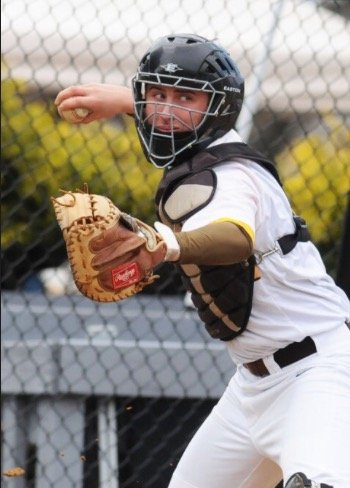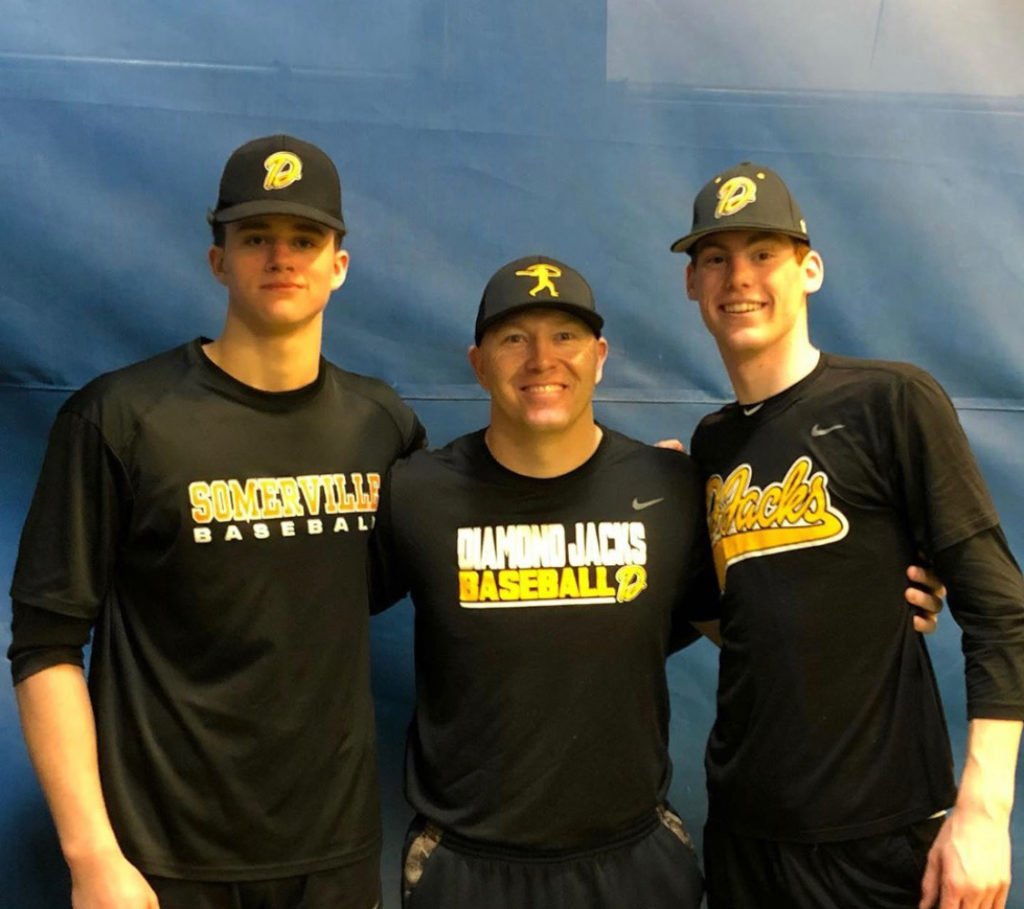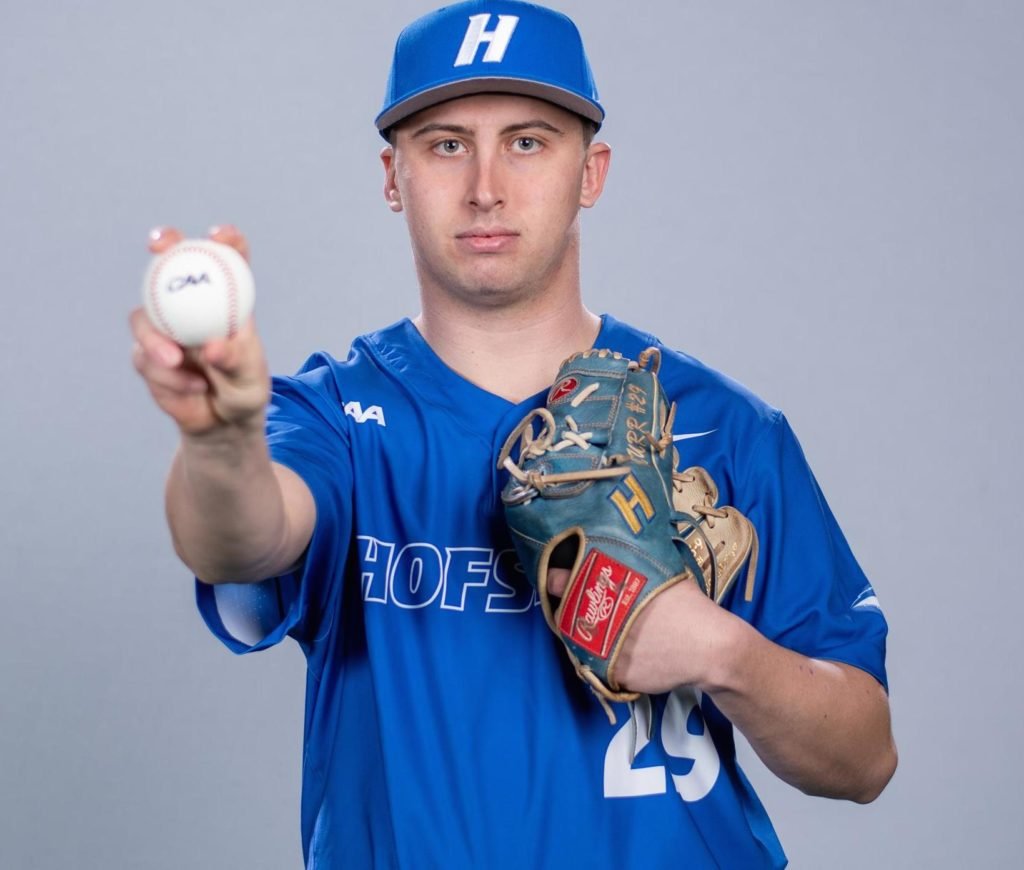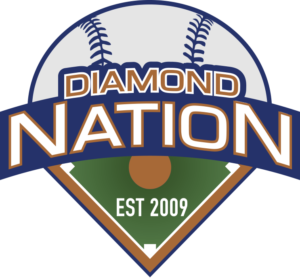Player development is at the forefront of Diamond Nation’s mission. What good is a baseball academy if it cannot direct its players in the most advantageous way to maximize their skill set?
Identifying a young player’s strengths forms a base, a jumping off point. Most talented players possess a strong arm and obvious, but developing, eye-hand skills. These basic skills enable players to play multiple positions at the youth level. And many end up toeing the rubber.
Conversely, being the player receiving the ball from a pitcher isn’t as enticing; with its physical demands and a requirement for leadership that doesn’t fit every player’s make-up, particularly at a young age.
So when a team, academy or travel organization has one or more players with the skill, mental acuity and desire to get behind the plate, they usually get plenty of reinforcement from their coaches. When their coach is a former professional catcher, one would assume a more pronounced slant toward keeping every quality backstop behind the plate.
So that begs the question, in the case of Diamond Nation’s developmental program, how did four of its quality catchers end up with Division 1 scholarships as pitchers? The answer truly lies in a team of coaches dedicated to doing the right thing for the player instead of a fixation on wins and losses.
“I admit, I try to keep them back there as long as I can,” said Travis Anderson, Diamond Nation’s catching coordinator who played nine years of professional ball as a catcher. But Anderson, Steve DiTrolio, Diamond Nation’s recruiting coordinator, and the rest of the Diamond Jacks coaching staff are in an unending search to identify and emphasize a player’s strongest skills.
Such determinations squarely center not on whether a player is good enough to stay behind the plate, rather if he has a higher potential arc to his college or professional career at another position.
All four of these players – Michael Murray (Hofstra), Gavin Stellpflug (Somerville), Drew Conover (Voorhees) and Tom Delany (Princeton) – came into the Diamond Nation family as catchers and worked as pitchers also. Each truly loved their spot behind the plate and was, with varying degrees, resistant to the idea of being utilized exclusively as a pitcher.
“It was hard to understand at first,” said Murray, a Watchung Hills grad and now a sophomore pitcher at Hofstra University. “I loved to do both and didn’t understand why I couldn’t keep doing both as a 15-16 year old kid. But the Diamond Jacks coaches saw a future for me as a pitcher and to make it to the collegiate level. I put my trust in them that it was the right decision for me.”

The highly competitive recruiting atmosphere that now exists, especially with players committing to colleges at younger and younger ages, drives Anderson, DiTrolio, Cust and their staff to constantly fine-tune the evaluation process so nothing is overlooked.
“Every college needs pitching,” said Anderson, “and they are making their decisions earlier. So if you hold off in your evaluation too long, your kids may miss the recruitment boat. Players are finding what they do best earlier now so we can put them in the best position for their future.”
Anderson tells the story of the remarkably talented former Diamond Jack A.J. Murray, an All-State catcher and middle linebacker at Westfield High School.
“Everyone was trying to move A.J. to the outfield because he was such a great hitter and he was so athletic,” says Anderson. “He ran a 6.8 60 and was an All-State football player. But he had that hard-nosed, leadership mentality behind the plate. We knew his college would figure it out.”
Murray starred as a catcher at Georgia Tech and was drafted by the Minnesota Twins in 2015, spending three years in the minor leagues as, yes, a catcher. In this case, keeping a catcher behind the plate was the wiser decision.

Making the switch
The physical and mental characteristics inherent in the position of catcher just happen to carry over well to the pitchers mound.
“The first thing you look for is arm strength,” said Anderson about his search for quality catchers. “You look at a kid’s ability to throw to second base and you look at his arm slot.”
Anderson says Michael Murray, “could throw to second base but his arm slot fit better as a pitcher. Conover and Gavin are so long, once the ball came out it was good. Delany comes right over top.”
Conover, a 6-5, 180 senior righty, and Stellpflug, a 6-6, 200 senior righty, certainly have developed into imposing forces on the mound. Conover is committed to Seton Hall University and Stellpflug is bound for Maryland. Delany, a 6-0, 160 junior has committed to Penn. “The ball jumps out of Tommy’s hand,” says Anderson.“
David Cone’s insight
Former major leaguer David Cone has written an amazing book, “Full Count. The Education of a Pitcher” and highlights in one insightful chapter the unique relationship between a catcher and pitcher.
“Catchers are a pitcher’s best resource on the field,” says Cone, “Sherpas to help guide us through a game.” He continued, “As paramount as it is for a pitcher to be confident in himself, he needs to have a catcher who shares that unwavering confidence.”
All four Diamond Jacks players are blessed with the unique experience of having lived in both worlds.
Delany
“As pitcher, I definitely look for a catcher who takes control of the field and does their job,” says the right-handed Delany. “As a former catcher, I appreciate the work they do behind the plate. I remember how strenuous it was to be on my game every pitch. I made sure to block and frame as well as I could. I feel that respect and understanding allows me to work better with catchers.”
Murray, a 6-1, 195 righty, now melds his catching and pitching experience at the collegiate level.
“I expect catchers to work hard for me, like I work hard for them,” says Murray. “Pitching is about competing in the zone and throwing strikes and catchers need to help the pitcher, whether it’s receiving, pitch-calling or blocking. It helps knowing the difficulties of catching. I find an understanding with catchers better because I have been there before.”

Conover and Stellpflug seemed destined for the mound long term courtesy of their length.
“Drew and Gavin were in the same boat,” says Anderson. “Drew threw on the side of the ball and it would dip a bit. Once we got him on the mound we started seeing that. He has that long arm action. Once we stopped taxing his legs as a catcher we started getting the most out of him.
“Drew’s arm action was built for the mound. We told him, ‘we know you love to catch and hit, but with the upside on the mound, you’d be holding yourself back.’ He throws in the low 90s now. Who knows how far he can go.”
Anderson reiterates that, “We are not afraid to move a kid. We have their best interest in mind. Sitting down with Steve, Kevin Cust and Chris Brown, I ask what they see. They give their honest opinion. There is a method to our madness. We want what’s best for the kid. In the end, it’s all about their development.”

Ditrolio watches closely the demands put on athletes who try to play multiple positions, particularly those catching and pitching.
“I believe in today’s tournament landscape it is very hard to catch and pitch for your team,” says DiTrolio. “We are mindful of all of our players’ arms but pitchers especially. When you have 4-5 games in a two or three-day period, the opportunity is just not there to really do both without he possible risk of injury over the course of a long season.”
Stellpflug, however, wasn’t as anxious about the move to focus on pitching.
“I came to the Diamond Jacks at 10U and was a catcher for two years,” says Stellpflug. “I was still playing the field and pitching. When they told me to stop bringing my gear I saw it as an opportunity to work on the other parts of my game.”
Anderson had no doubt about Stellpflug’s ability on the mound.
“It was a rough go at the start because he had to get stronger and get his body under control,” said Anderson. “But Gavin’s such a mature kid and always had this trust. His high school, Somerville, helped him, too, on the pitching side. His arm slot is perfect now for the mound. He has a very heavy ball.”
More telling, Stellpflug bought in and took his game to the next level through hard work. “His work ethic is through the roof,” says Anderson. “It’s on a different level than most. He made himself good. He’s always trying to do something to get his body stronger. I have no doubt he will maximize his ability.”
Stellpflug very much appreciates the perspective of having been behind the plate as a young player.
“It helps me to have seen pitching from the opposite point of view,” he says. “Now when I catch teammates before a game or practice, I pay attention to where the ball comes out of their hand, so I can see if they tip their pitches at release. It has also helped me understand the actual size of the strike zone and where I can exploit the hitter.”

Delany is a perceptive young man but admits to being a bit unsure when he was asked to move from behind the plate.
“I had mixed feelings because it was definitely a big change for me,” he said. “I was going from being involved in every play of every game to pitching one game every tournament.” That said, Delaney says, “I loved catching but I was definitely excited to start a new chapter on the mound.”
Anderson knew he was working with a kid who was ready.
“Tommy had such a high spin rate,” said Anderson. “I was thinking, this guy has a chance. He has a really good arm. I figured if he got more rest he’d be effective on the mound. It turned out he was already ahead of most pitchers before switching. And he was mature about the move.”
A catcher’s view pitchers should know
Anderson’s experience behind the plate will continue to enable him to provide valuable insight for both catchers and pitchers.
“A catcher has to know his pitching staff, their personality,” says Anderson. “You have to make the pitcher comfortable in his world. You are reading people. You have to be a good reader of people. Can I get on him? Maybe I shouldn’t get on him. It’s a hard thing to do, reading pitchers. Reading a pitcher goes with being a good catcher.
“The best catchers are leaders, but leaders of their pitcher staff most importantly.”
Michael Murray, Gavin Stellpflug, Drew Conover and Tom Delany have learned that both behind the plate and on the mound.

